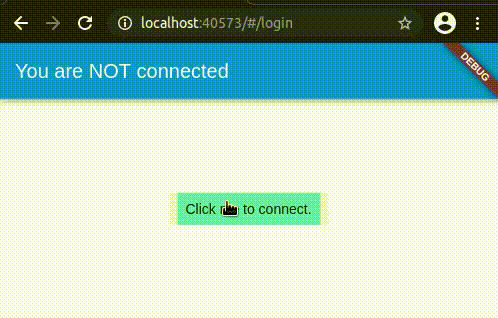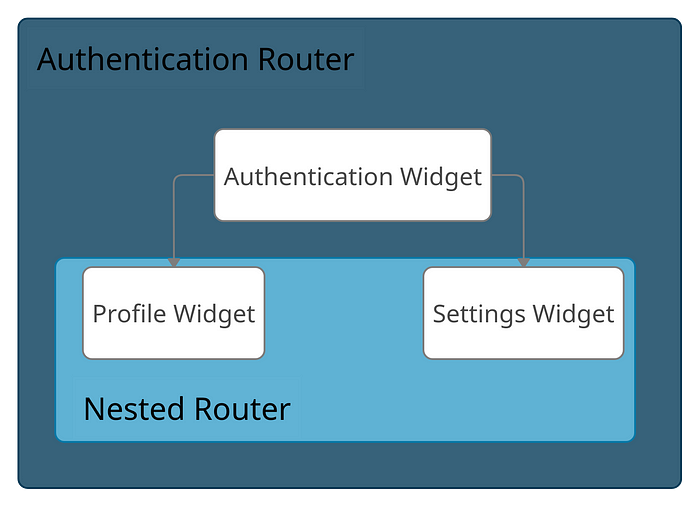Flutter web: A complete example using simple_url_handler
This article is part of a series aiming at making you a master of Navigator 2.0 while showing you that it is not as hard as people think. The other articles of this series are:
- Flutter Navigator 2.0: 101 for mobile dev: Where to start if you have no idea what navigator 2.0 is.
- Flutter Navigator 2.0 for mobile dev: Nested navigators basics: How to nest the navigators, and the fix needed to avoid that they ruin your animations
- Flutter Navigator 2.0 for mobile dev: Transitions: How to implement Hero or Page route transitions with navigator 2.0
- Flutter Navigator 2.0 for mobile dev: Bloc state management integration: How to use navigator 2.0 and the bloc library
- Flutter Navigator 2.0 for web dev: Url handling: The basics of URL handling.
- Flutter web: URL handling made simple with simple_url_handler: How to use the simple_url_handler package to manage the URL in flutter web easily.
Navigator 2.0 received some negative feedback when it came out. However, today we will see how:
- Routing is not as hard as it looks.
- Url handling is made very easy by the package simple_url_handler
The app we will create

App architecture

We will need 3 main widgets and 2 routers.
The app state
The state of the app will be stored in a ChangeNotifier provided by a ChangeNotifierProvider at the top of the app. Here is the app state class:
Three main attributes describe this class:
selectedBottomNavigationBarIndex: 0 is the profile, and 1 is the settingsredirectFromis set when the user tries to accessprofileorsettingswhile not being allowed to. It hosts aInAppPageswhich is eitherProfileorSettingsisAuthenticatedwhich is self-explanatory. The interesting part is that it is a setter method. Indeed when authenticating (i.e., settingisAuthenticatedto true) we check ifredirectedFromhas a value and if so, changeselectedBottomNavigationBarIndexaccordingly.
AuthenticationRouter
As always with navigator 2.0, we create a Router widget, which will contain our RouterDelegate (which is basically its child).
We also create a RootBackButtonDispatcher because we cant to handle the AppBar back button.
AuthenticationRouterDelegate
In the build method, we create a Navigator (to which we give a global key for page animations). The pages are MaterialPages containing either the AuthenticationWidget or the NestedRouterWidget. Note how we declarative decide if we want to show the NestedRouterWidget with the isAuthenticated boolean from our app state.
In the onPop method, we set isAuthenticated to false if we pop on the AuthenticationWidget. This happens when we press the AppBar back button, for example.
The popRoute method is triggered if we want to pop the AuthenticationWidget, in that case, we stop the application gracefully with the move_to_background package.
Note that we use obeservers: [HeroController()] because we need it to avoid breaking hero animations in the nested navigator. Since SimpleUrlHandler will create a navigator, this is a nested navigator, so we add this.
NestedRouter
This nested delegate is pretty much the same as the authentication one. Note how easy it is to nest navigator, nothing special: nest them.
We create a BottomNavigationBar on top of our navigator so that it is shared between the two pages, and inside the navigator, we choose which Widget to display with the selectedBottomNavigationBarIndex.
Also, note how we return false in the onPopPage method. This is because we handle the pop in the AuthenticationRouterDelegate. Since we took priority in line 16, a pop event will first be triggered here, and then, if we return false, the next onPopPage event will be triggered (so in our case, the AuthenticationRouterDelegate one).
Url Handling
Concerning the URL it will be handled as follow:
/profilewhen the user is on theProfileWidget/settingswhen the user is on theSettingsWidget/loginwhen the user is on theAuthenticationWidget/login#profilewhen the user tries to access/profilebut is not authenticated/login#settingswhen the user tries to access/settingsbut is not authenticated
This can be easily achieved thanks to the simple_url_handler package.
The first interesting part is happening line 21–22. Indeed, we add a listener to the app state, which will call SimpleUrlNotifier.of(context).notify any time the app state changes.
Then we must provide urlToAppState and appStateToUrl to the SimpleUrlHandler:
urlToAppState is called whenever the url is typed manually or the forward/backward button is pressed. When it is called, we parse the route location and modify our app state accordingly. Note that if the appState is updated, appStateToUrl is called thanks to what we just saw. So any redirection will update the url. Also, note that if that state can not be changed to a valid one, we SimpleUrlNotifier.of(context).notify() to update the url back to a valid one.
appStateToUrl is called when SimpleUrlNotifier.of(context).notify() is called or when the SimpleUrlHandler is built. Here we use our AppState class to determine what should be the corresponding url.
Try it yourself
You can find the code for this app on github. Play around with the code, and you will soon realize that navigator 2.0 is a beauty.